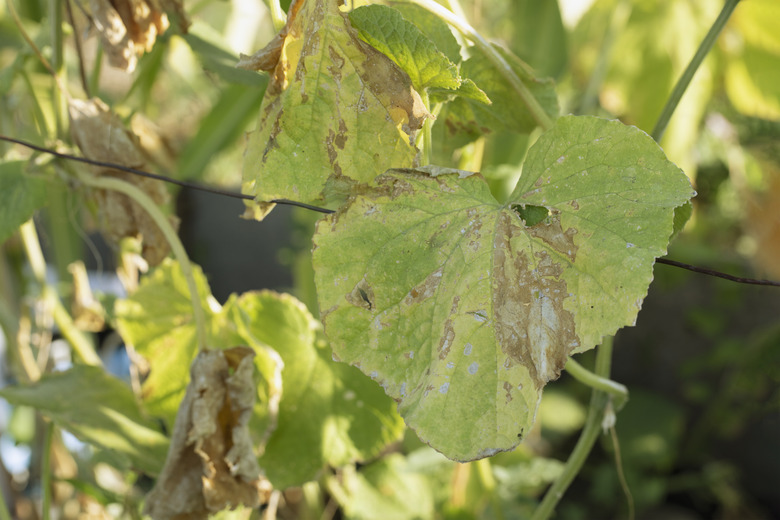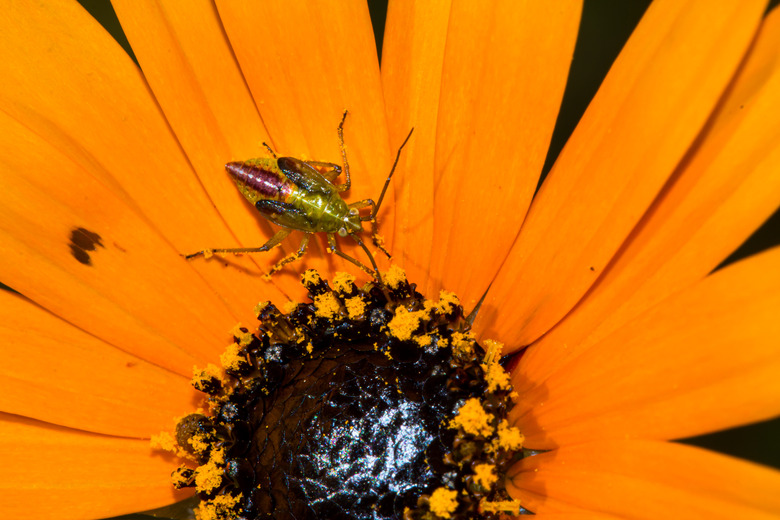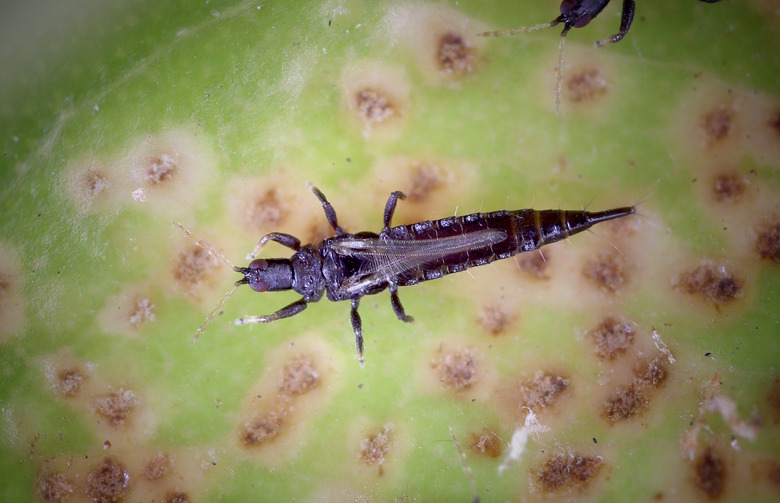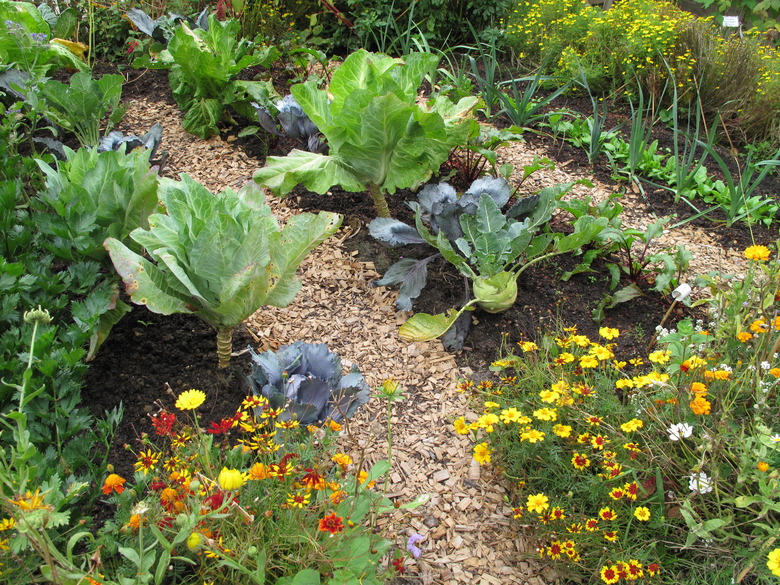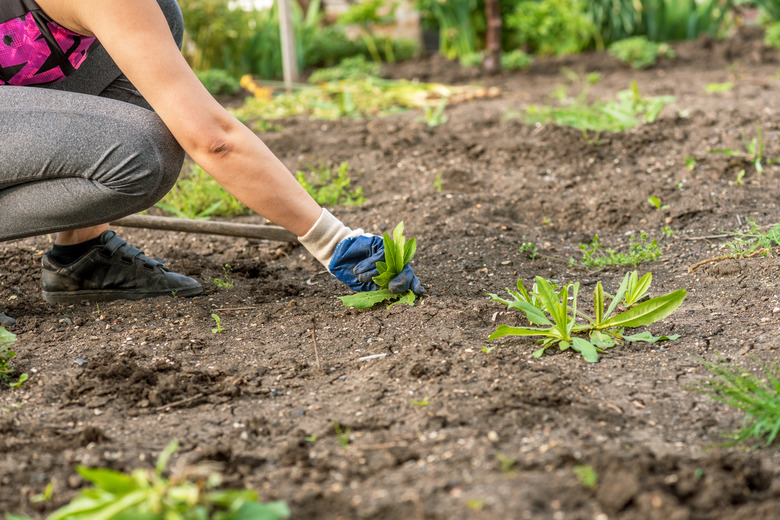How To Get Rid Of Thrips
We may receive a commission on purchases made from links.
With more than 6,000 species of thrips roaming the planet, you're quite likely to encounter them at some point in your gardening adventures. These pests appear on both outdoor and indoor plants as well as in greenhouses. For the most part, thrip damage is cosmetic, and your plants can recover if you recognize and treat thrip problems promptly. Thrips can prove fatal, however, especially when they carry plant diseases and viruses that can kill.
Unfortunately, thrips adapt to chemical pesticides quite quickly, making them tough to eliminate. Natural removal methods seem to work best, but you must stay vigilant and treat your plants frequently. One treatment, however, is generally not enough to banish thrips for good.
What Do Thrips Look Like?
What Do Thrips Look Like?
- Species name: Thysanoptera spp.
- Physical characteristics: Small insects about as thin as a needle at 1/20 inch long
- Wings or wingless? Wings
- Color/species varieties: More than 6,000 varieties;
straw-colored or black - Life cycle: Egg, larva, pupal stage featuring two instars, adult
How to Get Rid of Thrips
How to Get Rid of Thrips
The process of eliminating thrips varies somewhat based on whether the affected plant is indoors or outdoors. Although not feasible in the garden, the first step to treating thrips on houseplants or potted plants is to quarantine them well away from other plants to stop the spread. From there, it's time to plan your attack.
Identify the Thrips
Thrips are generally bad news, but there are some beneficial thrip species. These feed on other insects and mites, helping to keep your garden free of other pests. You may wish to catch a thrip and take it to your local garden center or extension office. Hopefully, it can help you identify the thrip species and make sure you aren't accidentally getting rid of garden helpers thinking they're a nuisance.
Wash the Plant
The biggest favor you can do your plants is to quickly remove any thrips you see on them. The fastest way to do so is to literally wash them off the plant. In the garden, this means blasting thrips off your plants with a jet of water from the garden hose. You can also place a blanket or tarp under the affected plants and shake them vigorously to remove the bugs. You can then bundle up the tarp and dispose of the insects.
When dealing with small potted plants or houseplants, place the plant in your kitchen sink and wash the leaves thoroughly with soapy water. The soap will remove the protective coating from any thrips that are present and will kill them via dehydration rather than just knocking them off the plant.
Use Pesticides (but with Caution)
As a general rule, pesticides often fail against thrips for two reasons. The first is that they adapt to these chemicals and develop resistance to them quickly. The second is their tiny size. Thrips themselves can be hard to see. By the time thrip damage becomes apparent on a plant, it's quite likely that the damage is done, and the thrips that caused it are long gone.
If you do opt for an insecticide, spinosad is generally one of the most effective on thrips. You'll need to apply it per the package directions, and you typically need to reapply the pesticide about once a week for ongoing thrip control. Spinosad is best applied outdoors. Because it can kill bees, avoid treating flowering plants. Gardeners often find that spinosad applications are most effective as a thrip preventive in the spring.
For houseplants, the safest pesticide choices are neem oil or horticultural oil, both of which work by smothering the thrips. These pesticides are much less toxic and are safer for indoor use. If they fail to correct the problem, you can treat houseplants with spinosad as long as you move them outdoors first.
When to Hire a Pro
When to Hire a Pro
Most backyard gardeners don't feel the need to incur the expense of an exterminator to get rid of thrips. This is usually a consideration reserved for commercial growers. However, if you're reaching a point where thrips are starting to destroy expensive perennials and ornamentals, you could consider calling in a pro. There are some pesticides that work against thrips, but they require a pesticide license.
On average, a pest control treatment costs between $100 and $250. Garden pest control may cost a bit more depending on the size of your space. Find an exterminator who is willing to treat your garden and ask for an estimate before you commit. A good exterminator is one who is fully licensed and willing to provide references and who comes with a good reputation.
Getting Rid of Thrips Naturally
Getting Rid of Thrips Naturally
If you prefer more natural pest control methods, you'll be happy to hear that natural solutions often work better on thrips than chemical ones. Your children, pets, and the environment will all thank you for choosing a natural method when you can effectively do so. This is particularly important when treating houseplants that live inside and affect the air quality inside your home.
Sacrificial Plants as Attractants
As sap-sucking insects, thrips aren't particularly fussy about which plants they'll attack. All can offer what they're after. There are some plants that thrips find especially tasty, including marigolds (Tagetes spp.) and chrysanthemums (Chrysanthemum spp.). If you wish to keep thrips out of other plants, try planting these favorites elsewhere in your garden away from the plants you want to save.
Do exercise some caution when using sacrificial crops. Luring thrips to your marigolds won't win you any points with your neighbors if your host plants sit too close to the neighbors' favorite ornamentals. You want to lure the thrips to areas where they can't hurt anyone's plants.
Biological Control Methods
In the circle of life, many beneficial insects and animals eat other insects and animals. You can take advantage of this in your outdoor growing space by luring thrip-eating birds and bugs into your garden. Pirate bugs, ladybugs, and lacewings all eat thrips and can help control thrip problems, as can birds who visit your garden.
When using predatory insects to control thrips, don't buy them online and then release them into your garden. Doing this can prove quite problematic. For one, there is no way to ensure that the insects you release will stay in your garden and help you. If your neighbors have plants that ladybugs like, for instance, the insects you release may migrate next door, where they will help your neighbor but not you.
The second issue is that you could accidentally release a species of insect that is invasive or unwanted in your area. Instead, lure predatory insects to your garden by planting native species that will naturally attract existing insects to your garden space. Additionally, install a few birdhouses and a birdbath to attract more insect-eating birds to your yard.
Install Reflective Mulch
Most effective in silver, gray, and white, reflective mulch is an interesting way to keep thrips at bay. It's also a bit of a misnomer since reflective mulch isn't really mulch at all. It's actually a sheet much like landscaping fabric. To use it, you spread it on the ground around your plants and then stake it into the soil in the same way you would a weed-blocking fabric.
The so-called mulch has a reflective sheen. This sheen makes it more difficult for flying insects, like thrips, to see your plants, in much the same way that humans struggle when driving toward the sun. If you're really lucky, the thrips won't find the plants in your garden. Even if they do, reflective mulch can significantly decrease their numbers.
Where Thrips Come From
Where Thrips Come From
Like many insect pests, thrips are ubiquitous and are found just about everywhere. They can overwinter on plants and in soils, and they reproduce rapidly, with adults typically living only 20 to 30 days. As such, thrips produce multiple generations every year. They're most active in the spring and summer.
Thrips are naturally present outdoors and have several means of coming inside to visit your houseplants. They may ride in with you after a trip through the garden or come in on fresh produce or cut flowers. Of course, you can also unknowingly bring these tiny insects inside with you when bringing potted plants inside. Thrips do fly and can come in through open doors or windows. Thrips can and do reproduce indoors as well as outdoors, so houseplant infestations can perpetuate themselves.
How to Prevent Thrips
How to Prevent Thrips
One way to prevent thrips is to keep your garden clean and tidy. Remove weeds, as many serve as host plants for thrips, and use a straw mulch to help keep thrip larvae on the ground from reaching your plants. Mulch also keeps the soil cooler, which can slow down the thrip life cycle, generating fewer pests. On plants that can tolerate it, opt for overhead irrigation, which can knock the thrips off the plants.
There are different types of thrips, and some have specific preferences as to what they eat. If you grow peppers, cucumbers, tomatoes, onions, and beans, for instance, install floating row covers to try to keep thrips at bay. You should also begin treating avocado and fruit trees with neem oil or pyrethrins early in the spring if you know thrips are problematic in your area.
To prevent thrips on houseplants, consider sprinkling them with diatomaceous earth to keep thrips at bay. As long as you don't inhale it during application, diatomaceous earth is safe for humans while being highly dangerous for thrips. Sprinkle the plant leaves liberally. When bringing new houseplants inside, always quarantine them for a while before putting them near your other plants.
Do Thrips Cause Damage?
Do Thrips Cause Damage?
Thrips do damage plants, and the damage can prove irreversible, especially if thrip problems are discovered late in the game. Thrip damage appears as small, irregular white blotches on plant leaves. These blotches sometimes have tiny black dots in them, which you'll be not-so-pleased to know are thrip fecal deposits. Infested plants may also display curling and twisting leaves along with stunted growth. Both flowers and leaves may become discolored during a thrip infestation.
On beans, thrip damage tends to appear as distorted young leaves with brown edges. Onion thrips reduce the size of the onion bulbs and often kill the plant altogether. Cabbage shows bronze foliage when fed on by thrips, while tomatoes and peppers develop small indentations where the thrips lay eggs. Thrips are also partial to gladiolus, impatiens, and roses.
Thrips can carry plant diseases, including the tomato spotted wilt virus and the impatiens necrotic spot virus. There is no cure for the tomato spotted wilt virus, which can affect tomatoes, onions, spinach, eggplant, and squash among others. The impatiens necrotic spot virus affects impatiens along with petunias, begonias, cyclamen, primrose, and others. Like the tomato spotted wilt virus, impatiens necrotic spot virus has no cure. You must destroy infected plants.
References
- Utah State University Extension: Thrips
- Ontario Ministry of Agriculture, Food and Rural Affairs: Thrips in Greenhouse Crops – Biology, Damage and Management
- University of California Statewide Integrated Pest Management Program: Thrips
- Epic Gardening: Thrips: How to Identify and Get Rid of Thrips ASAP
- The Old Farmer's Almanac: Thrips – How to Identify and Get Rid of Thrips
- Get Busy Gardening: How To Get Rid Of Thrips On Houseplants
- HomeAdvisor: How Much Does An Exterminator Cost?
